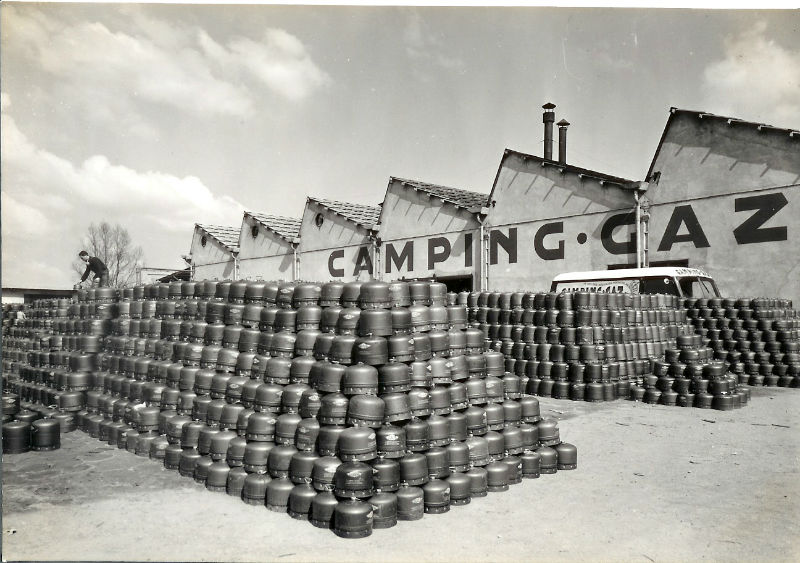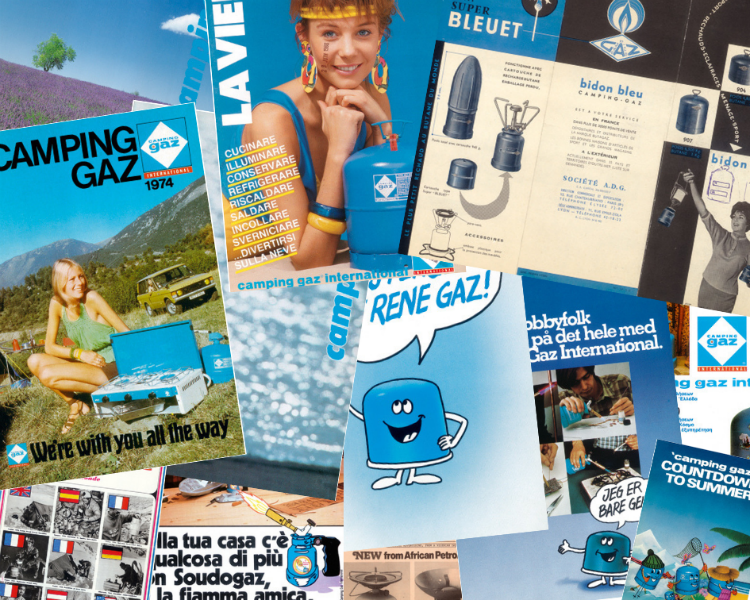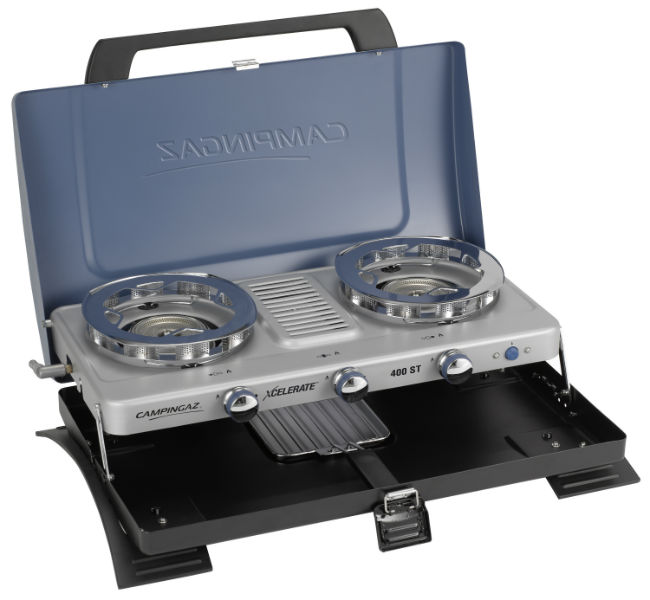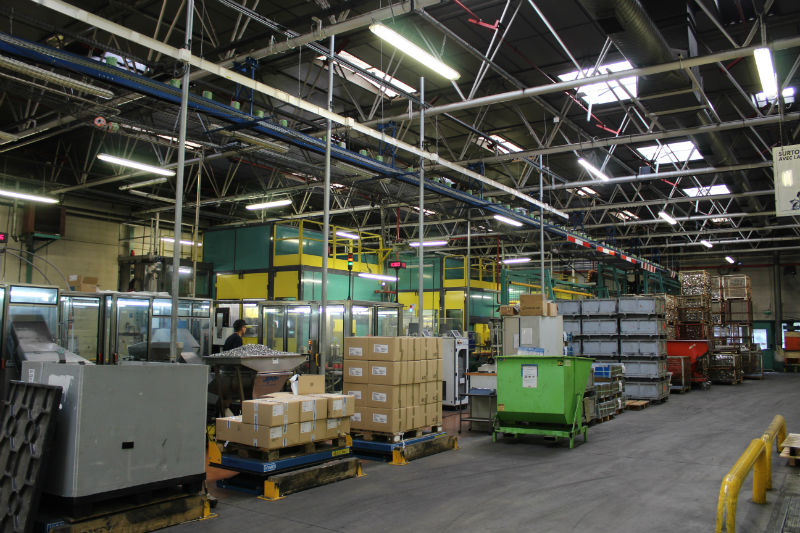The secret life of a camping gas bottle!
Have you ever wondered what happens to all those empty gas bottles when they’re finished with? Camping magazine editor Iain Duff went behind the scenes at the Campingaz factory in France to find out
When you fire up your camping stove and the sausages start to sizzle in the frying pan, you probably don’t spend too much time pondering the gas bottle’s journey to your campsite.
And why should you? It’s come straight from your local outdoor shop in perfect working order and in pristine condition – resplendent in its bright blue paintwork.
The only thing that matters is that it provides the fuel to let you cook your dinner, whether that’s heating up a tin of beans or creating the sort of posh nosh that the Guyrope Gourmet would be proud of.
But what you probably don’t realise is that “brand new” Campingaz cylinder may actually have been in circulation for more than 50 years, clocked up tens of thousands of miles and been used on countless campsites all over Europe.
As soon it runs out, you simply take the old cylinder back to your local retailer and exchange it for a new one. But its journey won’t stop there. Rather than ending up in a landfill site, polluting the environment for centuries to come, it will be restored, refilled and returned to the system for someone else to use. And so it continues, in theory, for ever (or at least until the condition has eventually deteriorated beyond repair).
The process means the manufacture of new cylinders is kept to a minimum, and at a time when we are more aware than ever about the devastating effects of single-use products on the natural world, that has to be good news for the environment.

At the heart of this operation is the headquarters of Campingaz on the outskirts of the French city of Lyon. For 70 years, most of them at this site, the company’s engineers have designed and manufactured the iconic gas stoves and bottles that have kept generations of campers fed, heated and illuminated.
A staggering 21 million canisters and cylinders come off the production line in Lyon every year and to mark Campingaz’s 70th birthday, Camping took a trip to the factory to find out more. From the outside it’s a fairly typical, unassuming industrial premises. You certainly wouldn’t guess that that it is classified with a hazard risk second only to a nuclear site.
Inside, though, it quickly becomes clear that this is a serious place. Security is tight and safety is paramount. Protective gear has to be worn in the factory and stark yellow signs painted onto the road remind workers and visitors that this is a “zone dangereuse”. The distinctive whiff of gas is noticeable throughout the site, as shiny pipes deliver the fuel mixture that goes into the bottles and cylinders. In the most risky areas, where the filling actually takes place, phones and cameras are banned in case they cause an explosion. Even light switches have to be fitted on the outside of the building to prevent a stray spark sending the whole place up in flames.
Laurent Danion is the Director of Operations for the company and is our guide for the factory tour. He explains that every day, hundreds of empty gas bottles, often battered and rusting, are delivered to the factory after being collected from retailers and waste facilities around Europe. On their arrival, the disused bottles are loaded onto the automated production line and the process for their renewal begins.
First the old containers are blasted clean and treated, then repainted in the famous Campingaz blue. After the paint dries, the bottles are stamped with the Campingaz logo, then trundle along the conveyor belt to the next stage, where they are refilled with gas. After emerging as good as new from the gas-filling zone, the bottles are loaded onto pallets by robots before being packed into trucks and sent to retailers across Europe.
Each bottle is stamped with the day and year that it was manufactured, and during our visit Laurent spots one marked 12-70. That means it first entered the system on the 12th day of 1970 – making it even older than me!
As well as recycling larger gas bottles, the Lyon plant also manufactures smaller canisters for Campingaz, sister brand Coleman, and, perhaps surprisingly, some of their market rivals, too. In the factory, the machinery whizzes and whirrs as the flat sheets of metal are transformed into the canisters that are so familiar to campers. At the end of the process, robots pack the canisters into cardboard boxes which they place carefully onto pallets and send out for dispatch.
With all the robots and machines around the factory, you could be forgiven for thinking that automation has removed the need for human input. But there are still 200 people working here, although that’s a significant reduction from the 1,200 based here in the 1970s.
It’s not all about production. In the labs, white-coated boffins test prototype products to ensure they perform as well as intended. Here we see samples of stoves and barbecues that will eventually find themselves in the shops in 2020, or perhaps even later. Not until the tests are completed successfully will they get the go-ahead.
One thing that has always intrigued me was how they get the gas inside the fully sealed canisters that you have to pierce when you attach the appliance. And I’m delighted to say that Laurent had the answer. The gas is chilled until it liquefies then is poured into the container before the base is attached and sealed. Simple when you know how!

CAMPINGAZ TIMELINE
1949: Creation of the company DEOM by three engineers to design and manufacture gas stoves and bottles under the brand Camping Gaz.
1952: The factory at Saint Genis Laval opens and a range of lighting and two-burner stoves launched
1955: The C206 pierceable cartridge and the Bleuet Stove are invented
1970: The company is bought by the French bank Crédit Lyonnais
1975: Hard coolboxes are introduced to expand the range
1982: Butagaz (Shell) and Primagaz take over Campingaz
1994: Launch of the first Campingaz gas barbecues
1996: American outdoor giant Coleman buys Campingaz
1997: Campingaz Italia opens its factory doors, producing gas barbecues
2005: Jarden buys Coleman
2016: US-based Newell Brands acquires Jarden










Recent Updates
Camping barbecue: our guide to cooking up a storm this summer
Is there anything more British than sausages grilled on an open flame and dropped on wet grass? Camping and barbecues go hand in hand, which is why ...
Our family camping checklist: everything you need to pack
Sure, you’ve packed the tent and the sleeping bags – but what about slip-on shoes and glow sticks? These are ...
Our guide to planning the perfect camping road trip
Roll down the window, pop on those shades and crank up the volume – it’s time for a road trip. Get ready for ...
Camping in Europe: our 12 top tips
If you’ve not camped in Europe before, there’s a few tips and tricks you’ll need to avoid some continental ...
Solar power for camping: all you need to know
Staying connected in the great outdoors is easier than ever with a solar charger – or is it? How reliable are ...
Wild camping kit list: everything you need for your next adventure
Make sure you’re ready for anything with this list of lightweight camping gear and clothing, including ...
Camping furniture: all you need to know to make your tent a cosy haven
We delve into the essentials of camping chairs, camping tables, and kitchen and bedroom furniture, ensuring ...
Camping lights for tents: What you need to know
We will guide you through all the lighting options available for you and your tent, including interior ...
Camping kitchen: all you need to know
In the great outdoors, a well-equipped camping kitchen transforms mealtime into a delightful adventure ...
How to pack away your camping gear for winter
A complete guide to packing and storing your gear at the end of the season ...
Other Articles
Camping guide to trailers
Trailer stash or trailer trash? Being able to carry lots of other gear when you go camping isn’t such a bad idea, is it? Nick Harding looks at the ...
Winter camping: all you need to know to keep warm
Winter doesn’t have to mean the end of the camping season. With good preparation and the right gear, there’s ...
Camping toilets: a complete guide
If you are wild camping, camping off-grid or the campsite you book onto doesn’t have toilet facilities, you ...
Top tips for camping in windy weather
How to make sure your tent stands up to gusty conditions ...
Camping tents: a complete guide
If you're considering buying a camping tent, whether it's your first time or you're a seasoned camper, making ...
Camping sleeping bags and beds: a complete guide
When it comes to camping, there's one essential item that can make or break your outdoor adventure: the ...
Camping gas: how to use gas on the campsite
A complete guide to using camping gas appliances safely on the campsite, from choosing the right stove to ...
Camping storage: a complete guide
Having problems knowing where to put all your gear when you're camping? Read our top tips and see some great ...
Camping electric hook-up: a complete guide
This is everything you need to know about using electricity on a campsite, including how to hook up ...
How to pack all your camping gear into your car
Planning a family camping holiday? Find out the best way to fit all the kit you need into your car boot, roof ...